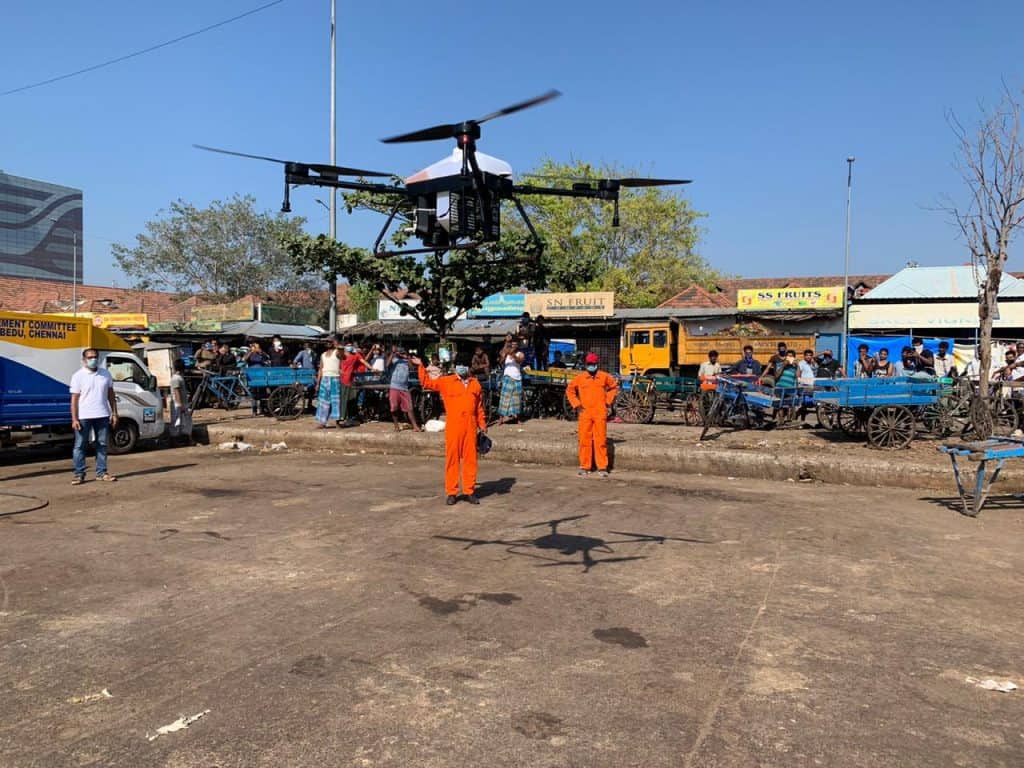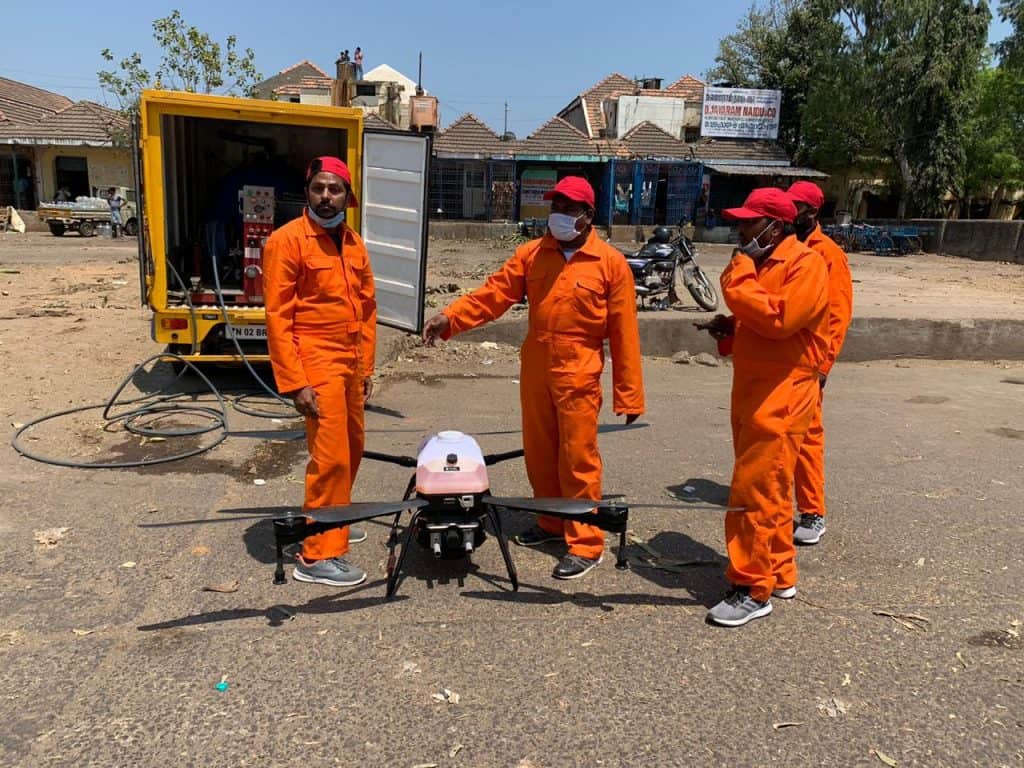Sample this: One drone disinfects 80,000 sq metres in a day, requiring negligible manpower and covering all nooks and corners of the city. This technology, adopted by the Greater Chennai Corporation (GCC) to combat the spread of COVID-19, has caught the attention of many city residents. In a tie-up with Team Dhaksha (Aerospace Department) of Anna University, the civic body is using drones for spraying disinfectant across the city.
Following a pilot run in the Corporation’s headquarters at Ripon Building using four drones, the project is to be extended across Chennai, according to the Corporation’s press release.
We spoke to M Muthu, Project Associate, Team Dhaksha, Anna University, whose team worked on this project. As his 70-member team is working to build 25 additional drones for this purpose, Muthu explains in detail the nuances of the project.

Team Dhaksha of Anna University during the demo of disinfecting Chennai with drones built by the students. Pic: Team Dhaksha
What mooted the idea of using a drone?
It was developed for agricultural purposes, to help farmers in spraying pesticides. However, as the unprecedented pandemic crisis loomed large, we converted it into a spraying drone. It took only a week’s time to repurpose and test the device.
How easy or difficult was it to repurpose the drone into a disinfecting one?
For agriculture, normal spraying is sufficient. But when it is to be used for disinfecting an area, the spraying must be vigorous, so we modified the mechanism. Initially, the drones were battery-operated, they had to be charged from time to time. To suit the current need, we made them petrol-fuelled, so they could be operated for long hours compared to the electric drone. Each drone has the capacity to hold three litres of fuel and 16 litres of disinfectant that can be sprayed in about 10 minutes.
Tell us about the distinct features of the drones.
Besides China and Germany, only India is using drones to battle COVID-19. One of the key features is its long endurance capability. Each drone covers 80,000 sq m per day and can fly for two to three acres in one sortie. The drone is remote-operated and can also function unmanned. Spraying is possible on all sides. The device can fly up to a maximum height of 100-150 m and a minimum of 5 m. The spraying is efficient when flown at 20-25 m.

Four drones developed by Team Dhaksha are currently deployed in various parts of the city to disinfect. Pic: Team Dhaksha
What is the disinfection plan? How efficient has it been so far?
We have covered Ripon Building, Rajiv Gandhi Government General Hospital (RGGGH), Marina, Nochikuppam, Pattinampakkam, Adyar, Koyambedu, Kasimedu and Greams Road. The Corporation has asked us to focus on the areas where people congregate in large numbers. We will be intensively focussing on Koyambedu and Kasimedu. The plan is to disinfect the two localities once in three days and it will continue for three weeks. Next up, we will be covering the Cooum River area. Besides these localities, we will also be disinfecting other neighbourhoods at the request of the corporation.
The efficiency has been good so far. We will get to know the accurate results as we spray for three weeks continuously.
Has the technology reduced the burden on the Domestic Breeding Checkers (DBCs)?
Yes, it has. For instance, three DBCs are deployed to disinfect the entire Koyambedu market. The manual work is risky now and time-consuming. With the drones, we disinfected the entire area within a few hours. In fact, the DBCs thanked us for making their work simpler and effective.
What are the major challenges that the team encountered?
The major challenge we had was the endurance capacity. We expected 10 hours to create a world record. However, there was some issue with the fuel ratio, hence we were unable to increase its functional time period. At present, it flies for six hours without any problem.
There are also restrictions on flying drones in the country. If they are relaxed at least during the pandemic, people who have drones can seek permission and convert them into spraying drones. This way, the public can help the government in combating the virus.
| The state government sanctioned Rs 20 crore for drone development to Team Dhaksha in 2017. The drones are primarily intended for aiding the relief measures during a disaster. The team took over a year to research and build five drones. Four of them are being used while one is on stand-by. |
Do you have plans to build more drones or develop new drones? If so, what is the status?
We are awaiting funds to build more drones. The estimated cost of development of 25 drones is around Rs 2 crore. Although the cost of manufacture is high, it comes handy during a disaster and can be modified to use in agriculture.
We have started development work- students design parts like propellers and share the design with vendors in Germany. Since import is suspended now, the team is checking with local vendors.
We have also been getting requests from students in other parts of the state to convert their normal drones to spraying drones. We are providing guidance to them.
Interested people with drones can email ksk.mit@gmail.com for guidance.